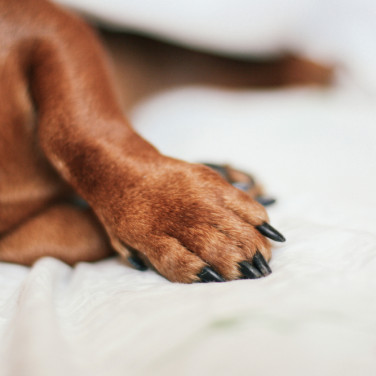DISEASES
Canine Glaucoma - Causes, Treatments, and Symptoms of Glaucoma in Dogs
페이지 정보
본문


What is canine glaucoma?
Glaucoma in dogs is a disease that arises due to an increase in intraocular pressure, which is the pressure inside the eye. The ciliary body in the eye is responsible for producing a fluid (aqueous humor) that nourishes and oxygenates the eye. This fluid is usually drained through a tube located between the cornea and the iris. However, if there is a blockage in the drainage system, the fluid accumulates in the eye, leading to an increase in pressure and the onset of glaucoma. Symptoms of glaucoma include increased eye secretion, bulging of the eyeball, and cloudiness of the eye.
While an anatomical abnormality can be the underlying cause of glaucoma, it can also result from other conditions like trauma or infection. Due to the severity of the pain and the rapid progression of this disease, it is advisable to seek professional treatment at a veterinarian hospital as soon as possible. Depending on the severity of the condition, treatment may involve medication or surgery and may require long-term management.
Causes of glaucoma in dogs
Primary glaucoma
Primary glaucoma is a condition that occurs in dogs due to a genetically inherited abnormality. Some breeds are more prone to primary glaucoma than other breeds. Typically, it affects only one eye at a time, but over time, the other eye may also become affected.
The breeds most likely to develop glaucoma are as follows:
- Boston Terrier
- Cocker Spaniel
- Maltese
- Shih Tzu
- Beagle
- Siberian Husky
Secondary glaucoma
Secondary glaucoma occurs when intraocular pressure increases due to trauma or disease. The possible causes of secondary glaucoma are as follows:
-
Uveitis
Glaucoma can develop when the drainage channel responsible for draining the aqueous humor becomes blocked due to inflammation or infection of the interior of the eye.
-
Anterior displacement of the lens
When the lens of the eye protrudes forward, it obstructs the drainage of aqueous humor. As a result, the fluid remains trapped in the eye, leading to an increase in intraocular pressure. This elevated pressure can lead to glaucoma.
-
Tumor
A tumor may physically block the drainage of the aqueous humor leading to glaucoma.
-
Intraocular hemorrhage
When bleeding occurs in the eye, the formation of blood clots can impede the drainage of the aqueous humor, causing an increase in intraocular pressure. This can ultimately result in glaucoma.
-
Lens damage
When the lens is damaged, it can cause proteins to leak into the eye, which may lead to an inflammatory reaction and then eventually block the drainage of the aqueous humor.
Symptoms of glaucoma in dogs

These are the most common symptoms dogs will begin to exhibit if glaucoma is suspected. Looking for any of these signs can help save your pet a significant amount of discomfort and pain.
The following symptoms of canine glaucoma are:
-
Signs of eye pain
Glaucoma causes severe eye pain. Early signs of eye pain can be noticed by frequent head shaking or rubbing of the eyes.
-
One of the symptoms of glaucoma is an increase in eye secretions, especially in liquid form.
-
Bulging eyes
In dogs with glaucoma, the whites of the eyes become red and inflamed, and the area around the eyes also becomes swollen or sometimes may appear bulging.
-
Cloudy eyes
The color of the cornea may become cloudy and bluish.
-
Vision loss
If the increased intraocular pressure progresses and goes unnoticed, vision loss can occur very quickly. Which will result in clumsiness, not wanting to go out at night, being easily startled, and bumping into people and objects often.
-
Decreased energy and loss of appetite may occur as a result of increased pressure in their eye(s).
When to see a vet for glaucoma in dogs
Glaucoma can quickly manifest in dogs, with acute cases progressing rapidly and potentially resulting in blindness. If you notice sudden symptoms of glaucoma in the list above, it's crucial to seek immediate treatment with a veterinarian.
How to deal with glaucoma in dogs at home
Glaucoma is a disease that requires specialized treatment. If you suspect glaucoma in your dog, do your best to not let your dog agitate their eyes until you can visit the vet. If your dog continues to rub their eyes due to the pain, it is recommended to use a neck collar to prevent them from touching them, as it may cause scarring or secondary infection. Because glaucoma is very painful and can lead to blindness, you should visit the vet for treatment as soon as possible.
Diagnosing glaucoma in dogs
During a visit to the vet for glaucoma, a basic medical examination will be conducted to determine the condition of your pet. To confirm the diagnosis, an intraocular pressure measurement will be performed by the vet.
Your vet may ask you some of the following questions to help diagnose glaucoma:
- When did your puppy start showing signs of discomfort in the eye?
- Has your dog had any recent trauma around their eyes?
- Does your dog produce a lot of tear-like discharge from their eyes?
- Has your dog been less energetic than usual or lost their appetite?
Intraocular pressure measurement test
To confirm the diagnosis, an intraocular pressure measurement test can be conducted. Glaucoma can be diagnosed by measuring intraocular pressure with a tonometer. A dog's normal intraocular pressure range is 15 to 25 mmHg. If the pressure measured is higher than this range and vision loss and bulging eyes are also observed, then glaucoma can be diagnosed.
Treatment and surgery for glaucoma in dogs

The primary focus of treating glaucoma is to decrease the pressure inside the eye. Medications are available to lower the intraocular pressure, while more advanced cases may necessitate surgical intervention. In instances where glaucoma is secondary, addressing the underlying disease is vital before initiating any type of treatment for glaucoma.
In the case of an emergency with acute glaucoma, the following measures can be taken to reduce intraocular pressure:
-
Osmotic diuretic
A diuretic called mannitol can reduce intraocular pressure by inhibiting aqueous humor production
-
Prostaglandin agonists
This treatment can reduce intraocular pressure by improving the flow of the aqueous humor.
-
Anterior chamber paracentesis
This technique involves inserting a needle parallel to the iris, which allows the aqueous humor to flow out. To perform this procedure a specialist is required along with sedation or anesthesia.
To manage intraocular pressure low in the long term, drug treatment is necessary.
-
Carbonic anhydrase inhibitor
It inhibits the production of aqueous humor to prevent an increase in intraocular pressure.
-
Beta-blockers
Beta-blockers also inhibit the production of aqueous humor to prevent an increase in intraocular pressure.
-
Painkillers
Pain medications are prescribed to manage the pain caused by glaucoma.
-
Anti-inflammatory
Glaucoma can cause an inflammatory reaction in the eye, so anti-inflammatory drugs may be prescribed.
How to prevent glaucoma in dogs
Glaucoma may arise from genetic causes or be secondary due to trauma or disease. It's important to be mindful of your dog's eye health if they are of a breed susceptible to this condition. Time is of the essence when dealing with glaucoma, so if you observe symptoms such as eye pain or vision loss in your dog, seek medical attention at a veterinary hospital immediately.
Find out more about your dog’s symptoms and diseases on the Buddydoc app!

The Buddydoc library is filled with everything you’d want to know about each symptom and disease your pet may experience. If you would like to find out more about the causes, signs, treatments, preventions, and more for your dog’s disease. Try out the Buddydoc app and search your pet’s symptoms or diseases in the Buddydoc library.













